Stripped of iconic stripes during restoration, Cape Hatteras Lighthouse nearly unrecognizable
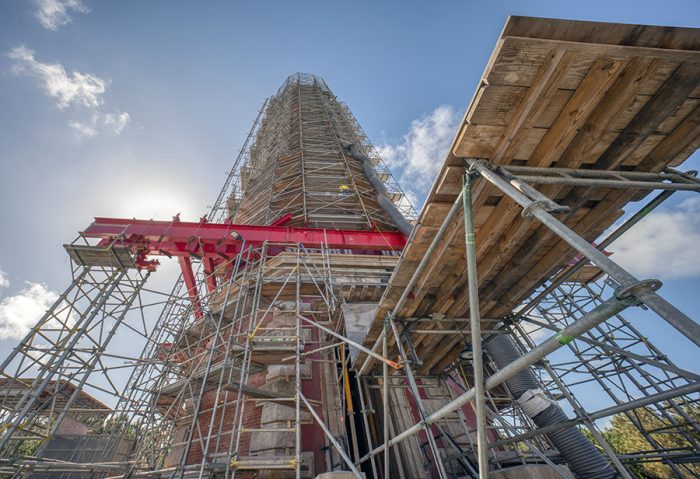
Stripped of its iconic black-and-white stripes, and encased in a tower of scaffolding, the Cape Hatteras Lighthouse is nearly unrecognizable.
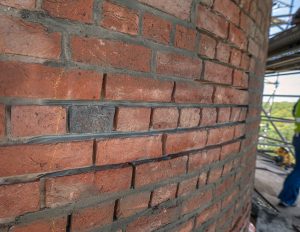
On the grounds bordering the tower, there are piles of intricate metal pieces that need to be repaired or replaced, including the top level landings and railings.
The outer landscape is a patchwork of semi-finished brick and concrete pathways next to thousands of young seedlings that were planted over the summer.
An elevator is tacked onto the side of the lighthouse – (which, unfortunately, wasn’t an available asset for the keepers who manned the light from 1870-1939) – and the interior of the structure is a maze of temporary landings and stairs to access the multiple levels.
All of this upheaval is a good thing, however, and marks the progress of an unprecedented restoration project that has been in the works for years.
These multifaceted and ongoing construction activities stem from the results of a 2014 Comprehensive Condition Assessment Report and a 2016 Historic Structure Report, and as of October 2024, the lighthouse is on track to reopen for climbing by the summer of 2026.
With the exception of the distinctively bare exterior, the waves of progress over the last several months can be hard to spot underneath the shell of scaffolding. But progress has been made, inside and out, on all of the moving parts of the full restoration.
Notable project updates for October 2024, as well as upcoming developments, include the following.
Paint removal
While all of the Cape Hatteras Lighthouse’s interior paint was removed back in 2021, Stone and Lime Historic Restoration Services – the primary contractor for the complete restoration – has spent 10-12 hours per day blasting the exterior of the structure to uncover the original brick façade.
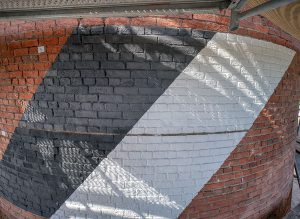
Exterior paint removal began on August 19, and as of October, this phase of the project is nearly complete, after rounds of vapor blasting at 70 psi.
The lighthouse will be bare for a while, as repainting the exterior is one of the last phases of the project and is expected to begin sometime in the spring of 2025.
The lighthouse has been repainted many times before – and as recently as 2014 – but the new paint is a KEIM mineral coating that is specially designed to be much more resistant to moisture.
“There are other products as well, but KEIM seems to function the best,” said Lindsey Gravel, Site Quality Control Manager for Stone and Lime.
Cape Hatteras Lighthouse visitors who want a sneak peek of how the lighthouse will look once the new coating is added can refer to a small patch of black-and-white paint on the side of the tower.
“If you look close, you can see a black and white stripe,” said Gravel. “We did do a mock-up, and we’re selecting the final colors now.”
Fresnel lens replica
The Cape Hatteras Lighthouse’s Museum of the Sea and Visitor Center is filled with artifacts from decades and centuries ago, but the site’s newest exhibit is just a few months old.
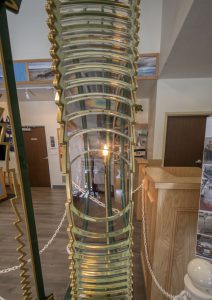
It’s the prototype of the new first-order Fresnel lens that will eventually be added to the top of the tower, and it was created to serve as a blueprint for the new but historically accurate beacon.
Dan Spinella of Artworks Florida is one of the only people in the world who can restore and replicate a Fresnel lens – a historic type of lighthouse lens that was invented in 1819 by French physicist Augustin Fresnel (pronounced “Fruh-nel”).
Spinella was enlisted to create the replica of the Cape Hatteras Lighthouse’s original light source, and while this is his 50th lighthouse project, it is the first time he has crafted a complicated first-order Fresnel lens – the largest of the eight orders of Fresnel lenses.
Since creating the acrylic and metal prototype, (which is prominently on display at the Visitor Center), Spinella has been working at his Florida home base to put together the full 12-foot-tall lens, which is akin to working on an elaborate puzzle where every piece has to be made from scratch.
The final lens will have one large bulls-eye panel, 24 elaborate flash panels, and a network of individual prisms that allow the beacon’s light to extend for roughly 18 miles.
“Originally, there were 1,008 prisms in different elements [of the lens],” said Gravel, noting that the new lens will have a similar number, and that it takes Spinella about an hour to install every prism into the frames. “Currently, he has 34 of those installed, so he is working his way through.”
When the lens is fully complete, the primary difference between the replica first-order Fresnel lens and the 19th-century original will be the technology powering the illumination, and specifically, an LED light as opposed to an oil lamp.
“What will happen is the light will stay on at all times, but the rotating mechanism will make it appear as if it’s flashing every seven and a half seconds,” said Gravel.
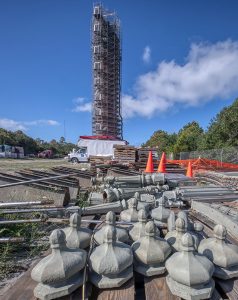
Metalwork
One of the most intricate parts of the multi-pronged project is the individual pieces of metal that are found throughout the tower, top to bottom.
The sheer variety of metal pieces is evident in small piles of recently-removed stairs, barristers, railings, and other metal bits and pieces.
“All of these [metal parts] have been assessed,” said Gravel, referring to an ongoing and extensive survey on every metal component to determine its condition, and if it should repaired or replaced. “We’re currently going through an analysis on all of these metals right now to determine the best path forward… and we’d like to preserve as much as possible.”
Oil House Restoration
The squat oil house on the edge of the nearly 200-foot-tall lighthouse is easy to miss, but this 1892 structure is also undergoing a restoration.
After remaining dormant for years, brick patches and cracks have been addressed or fixed, and the windows – which were added in 1930 – have been removed to restore the square structure to its original condition.
Landscaping
The grounds surrounding the lighthouse are another highly active area during the current restoration work, as preparations are made for concrete installation that will connect to form the new walkways.
Frequent visitors to the Cape Hatteras Lighthouse may remember the pre-2024 site as a patchwork of grass and bare earth, due to decades of foot traffic. With the new circular pathways and fresh landscaping, the Cape Hatteras Light Station will be more attractive and easier to navigate.
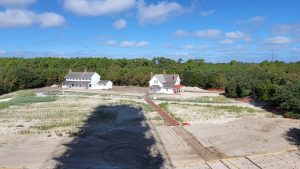
What’s next, and what to expect
Like any detailed restoration of a 154-year-old structure, there have been some surprises along the way, both good and bad.
On a positive note, after removing the exterior paint that hid the condition of the original bricks, it appears that the original estimate of replacing 40,000 bricks throughout the tower is a bit high.
“The bricks are in great condition,” said Gravel. “We don’t know what the south side looks like – which is the oceanside – but once we get that stripped, we’ll have a full assessment.”
As for more complicated or troublesome tasks in the months ahead, the specifics of what comes next are naturally revealed as pieces of the lighthouse are examined, taken apart, or stripped to their original condition.
“There has been a couple of technical surprises as we’re exposing things, but that’s just restoration,” said Gravel. “You really have to start exposing and assessing everything, and then the work starts to flow after that.”
In the months ahead…
- The lighthouse will keep its bare brick-red color until the spring of 2025, when the exterior painting is expected to begin.
- The lighthouse site will remain open to the public for the duration of the project, although there will be marked-off areas on the grounds where construction activities are ongoing.
- The lighthouse will hopefully reopen for climbing for the 2026 summertime season. Once the lighthouse does open for climbing, tickets will only be available electronically, similar to the current Bodie Island Lighthouse ticket-purchasing system.
- The public can keep tabs on the progress and details of the Cape Hatteras Lighthouse restoration project on the CHNS website.
- Click here for a video update of the Cape Hatteras Lighthouse restoration from SamWalkerOBXNews.com
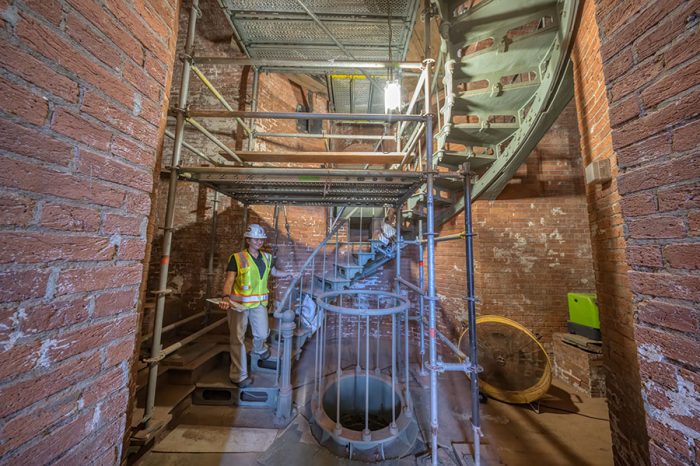
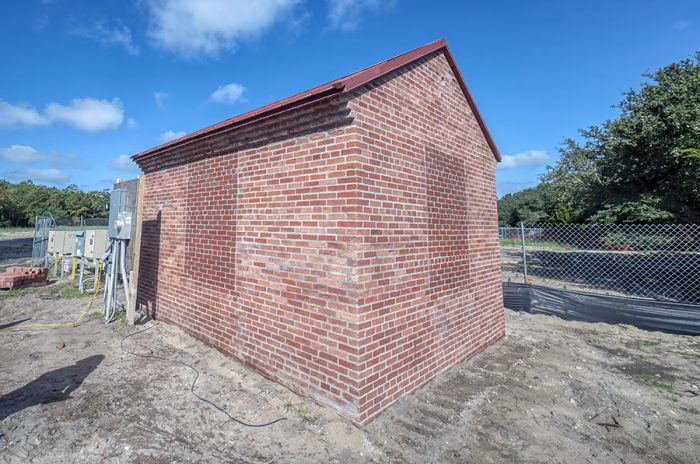











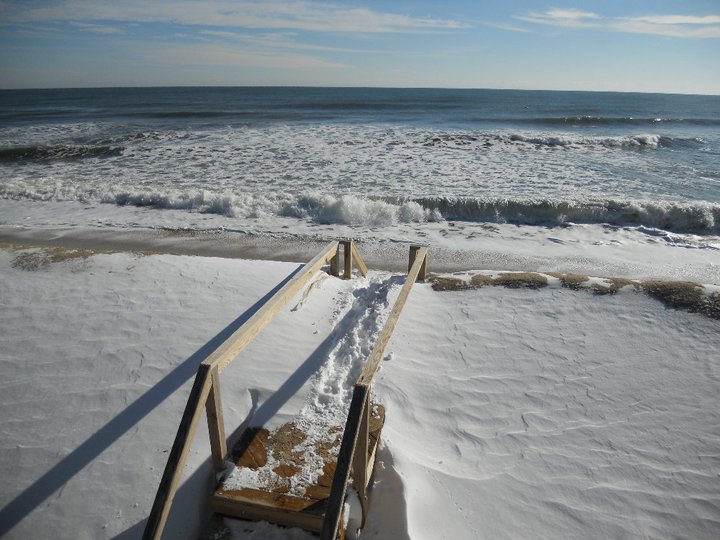
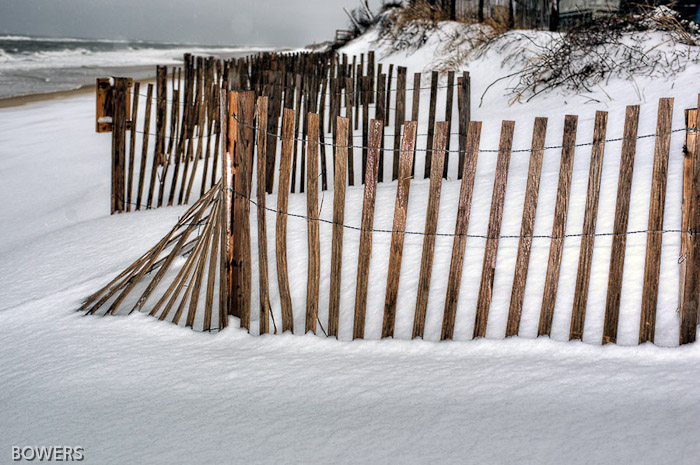



























great article and wonderful photos from a photographer who as a local used to take us up and down the old light house before it was moved over 50 years ago. Best to Don from Kathy and Robin Smith. Robin and her family purchased the old O’Brien place and my family visits from California often. Great story ! kathy Smith Waldie